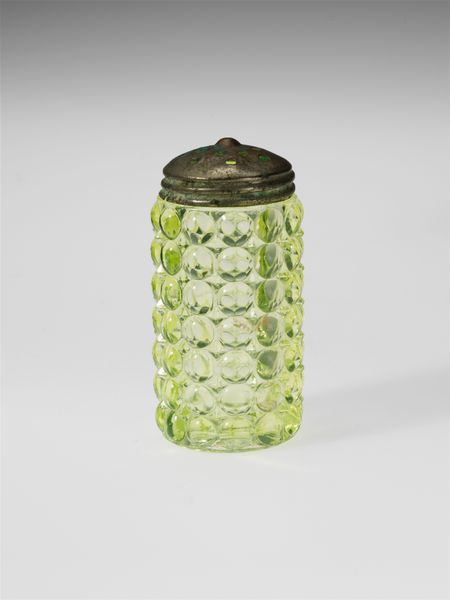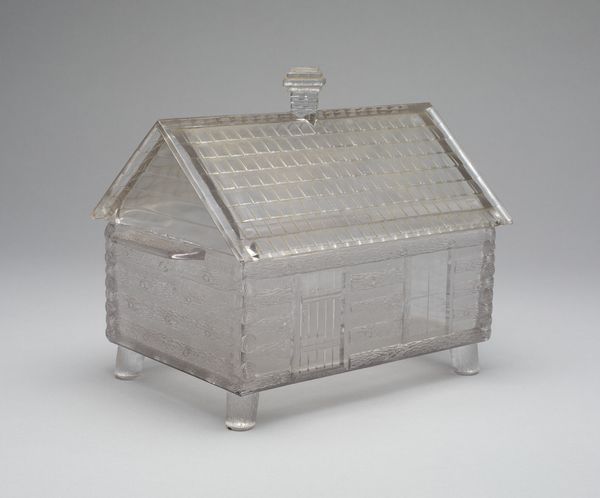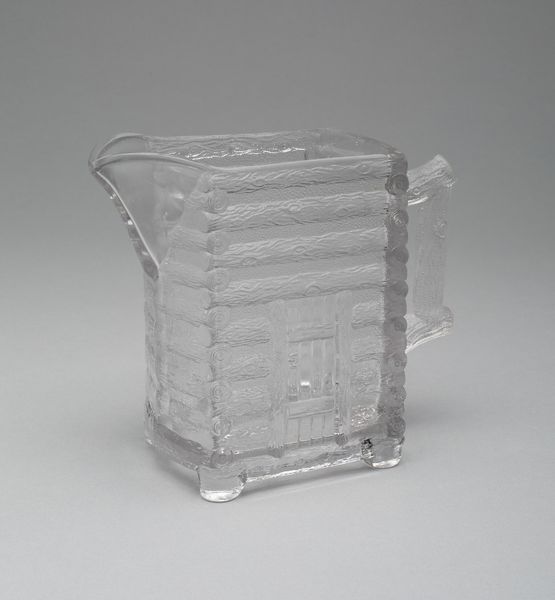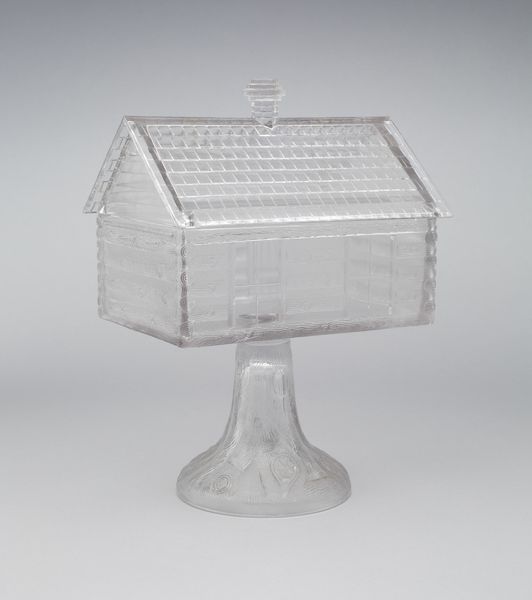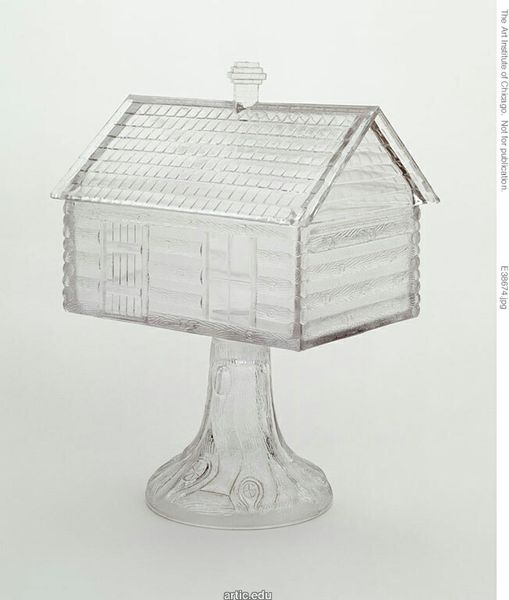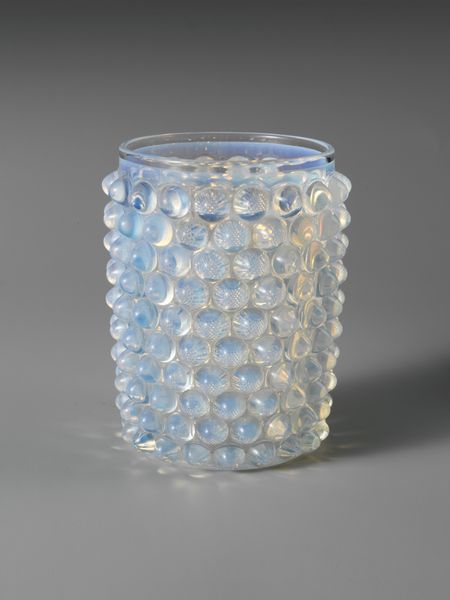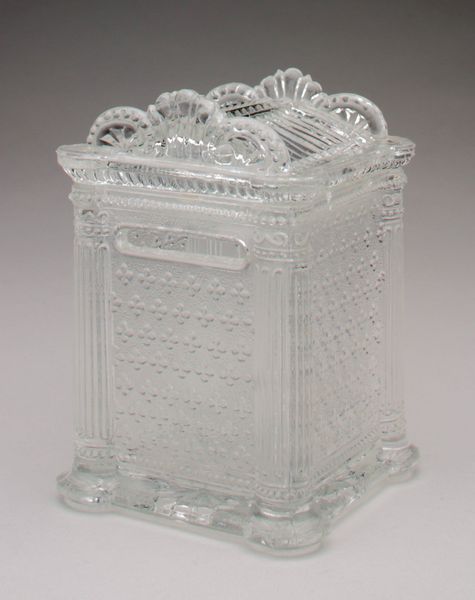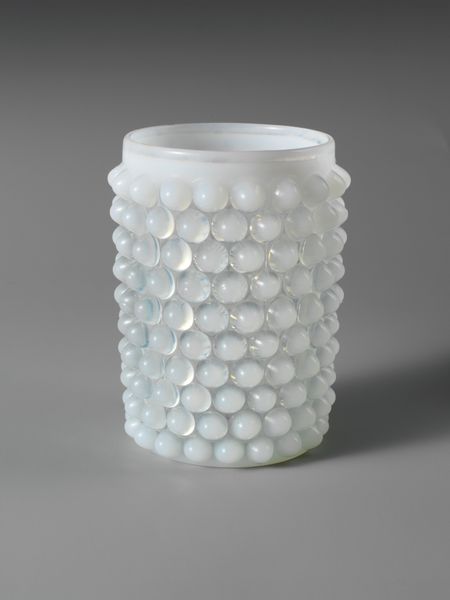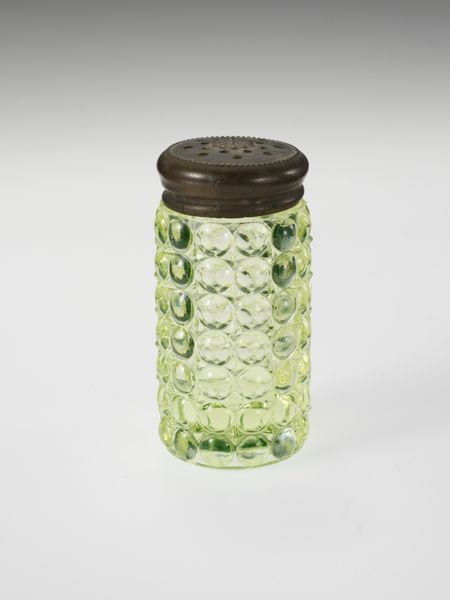
glass
#
glass
#
decorative-art
Dimensions: 16.8 × 10.2 × 7.6 cm (6 5/8 × 4 × 3 in.)
Copyright: Public Domain
Editor: This is the "Log Cabin" pattern covered sugar bowl, created around 1875 by Central Glass Company. It’s made of glass, and the translucent yellow color gives it an almost whimsical feel, despite its rigid geometric shape. What does this piece bring to mind for you? Curator: It's a fascinating piece of social commentary, actually. The "Log Cabin" design gained popularity during the 1840 presidential election as a symbol of William Henry Harrison's supposed humble origins. Later, the image of the log cabin was revived as a powerful symbol representing the "common man," Abraham Lincoln. Editor: So, its form connects it to significant political narratives. Is that why it's not just a simple decorative object? Curator: Exactly. Glassware like this, mass-produced, became accessible to a wider audience, embedding those political ideals into everyday domestic life. The act of using such a piece, perhaps filled with sugar obtained through complex colonial trade routes, intertwined domesticity and larger political-economic landscapes. What do you think about its distribution method at the time? Editor: Interesting that this was spread using popular culture. Do you mean things like newspapers and other things that promoted this? I suppose I never think about a sugar bowl as a piece of propaganda! Curator: It underscores how pervasive and multifaceted political messaging can be, and how commercial objects reflect larger cultural trends. Consider its presence in the home, a constant reminder, subtle yet potent. It challenges us to look beyond the aesthetic appeal. Editor: This really highlights how an everyday object can carry so much historical and social weight. It is making me rethink how I see other household items. Curator: Absolutely. It shows how even seemingly simple designs can tell complex stories. It's all about the socio-political context that shaped the object and its reception.
Comments
No comments
Be the first to comment and join the conversation on the ultimate creative platform.

